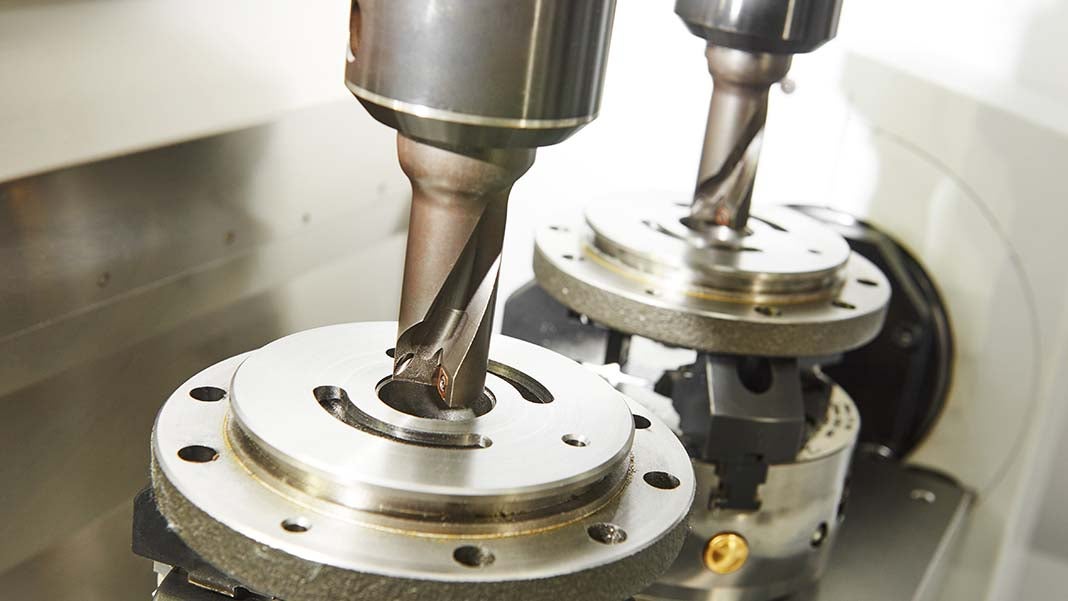
Time and technology wait for no one, especially when you’re talking about the ever-evolving, fast-paced world of hardware manufacturing.
Not only are advances being made in materials and connectivity capabilities, but hardware VC firms and incubators such as Bolt and Lemnos Labs are flipping the script on the traditional way of doing business—from seed funding to expensive tools and machinery to valuable time with hardware experts and innovators. Shared workspace is also on the rise with organizations like WeWork, a real estate company that repurposes urban property for a new generation of software startups.
So what’s next? How are businesses of all sizes capitalizing on the latest manufacturing industry trends?
“The fervor and pace of startups manufacturing physical products have increased dramatically,” explains technology futurist Jordan Brandt. “The big questions today are, ‘What is the long-term viability of these companies?’ and ‘Are they going to be able to scale production?’”
Here, Brandt covers four new manufacturing industry trends.
- Next-Generation Materials. Brandt believes the true revolution lies in the data driving materials design. The overwhelming majority of matter used in products today comprises standard, homogenous bulk materials: aluminum, thermoplastics, ceramics, and so forth. Most of these are converted into products through processes that have been around since the first Industrial Revolution: casting, molding, forming, and machining. Whereas these processes can be tuned to manipulate the actual structure and performance of the material, you are still limited by the bulk properties.
Additive manufacturing, a process through which you place the material precisely where you want it, opens up entirely new opportunities. You can now design the material just as you design the product, yielding a class of computational materials with properties never before observed in nature: metals that shrink when you heat them and colors that are created through the microstructure rather than with pigment (just like butterfly wings). “Some people call them metamaterials,” Brandt says. “It’s the postmodern world of material science.”
Related Article: The New Manufacturing Order
Startups that are able to truly leverage these new metacapabilities will definitely be in the driver’s seat.
- The Cloud. Ah, the ubiquitous yet enigmatic cloud. Online storage is probably the cloud’s most common use, with familiar hosting sites such as Dropbox, Google Drive, and Box leading the way. But the move toward a more mobile and global workforce has inspired thought leaders to answer one burning question: How do you enable real-time collaboration between disparate teams working with very specific—and often very large—types of data?
It starts with communication. A recent article on Business Insider noted that real-time messaging and collaboration tool Slack is now valued at over $2 billion and boasts more than 500,000 users. There is also no shortage of slick and simple online project-management options out there. Entities like Google Docs, GitHub (for software coding), and Splice (for music) are helping solve collaboration issues in their respective fields, but areas such as film and architecture require industry-specific solutions.
“To build a building or design a car,” Brandt says, “it takes large teams around the world, each with their own disciplinary-focused model: the electrical model, the structural model, the design model. In any given system, you might have 10 to 20 different models.”
Solutions such as Autodesk Fusion 360 and the ability to share 3D models and specifications—coupled with real-time markup and review—are allowing manufacturing startups to scale with lower risk. Cloud-based product-lifecycle management (PLM) solutions such as Autodesk PLM 360 allow businesses to more effectively communicate with and manage their supply chain, which can help cut down overhead costs, minimize the amount of rework, and accelerate time to market.
- Product Personalization. No, not NIKEiD or Coke cans with your girlfriend’s name on them. The next wave of personalization is less about customizing colors and more about optimizing performance: not just how the shoelooks on your foot, but how it fits on your foot and impacts your particular style of athletics.
Bespoke apparel is already on the rise with the Madison Avenue set, with many companies offering completely made-to-order ensembles. 3D printing is, of course, pushing the envelope in this arena, especially in the medical field. Hearing aids, retainers, and other medical implants have benefited from improved personalization. Take Han Han, the 3-year-old Chinese baby who, this summer, was successfully treated for a congenital birth defect with a 3D-printed titanium skull implant. Or the 22-year-old Dutch woman whose entire skull was replaced by a full 3D-printed plastic skull, the first procedure of its kind. Talk about personalization.
But it’s not just extreme cases that feed this demand. In a weak economy, people want to be more streamlined; they don’t want to be nailed down to a bunch of useless “stuff.” Purpose-built items create brand affinity and a more satisfying consumer experience and, in ideal scenarios, aid in productivity.
“At the end of the day, we can find ways to market new stuff, but unless we are fundamentally improving productivity, it doesn’t really help to advance the economy,” Brandt reasons.
- Connectivity. “We’re just at the threshold of this space,” Brandt says. “We’ve gone from the kitschy stuff to actually making an impact. The device is one aspect of it, but the real value comes with what you do with that information. What helps you make better choices or helps make choicesfor you?”
People are living in a world of connectivity. From Fitbits to Nest Learning Thermostats to Internet-connected refrigerators, devices are collecting massive amounts of data to help people live better, more efficient lives. But who has time to interpret all those numbers? Who is going to pore over your Apple Health results and spit out your ideal workout routine and diet plan? Without analytics, the Fitbit is merely an expensive accessory. The next wave of connected devices won’t just show you the facts; they’ll help you make the decisions.
Cubic, developed by Palo Alto–based Cubic Robotics, is being billed as “your personal AI with a personality.” AmazonFresh is another entity Brandt says is primed for hyperconnectivity and could “find out how much exercise you’ve had that week, know when you’re going to be home, and order the right food for you.” Big data is available, and businesses are taking advantage, but does the combination of analytics and AI herald the imminent arrival of sentient synthetic overlords?
“I don’t know that the population couples the Internet of Things with Terminator yet,” Brandt jokes. “I think that’s more in the land of the big-dog robotics research. I would happily unload a lot of my daily decision making if there was a device and the AI behind it that I trusted.”












